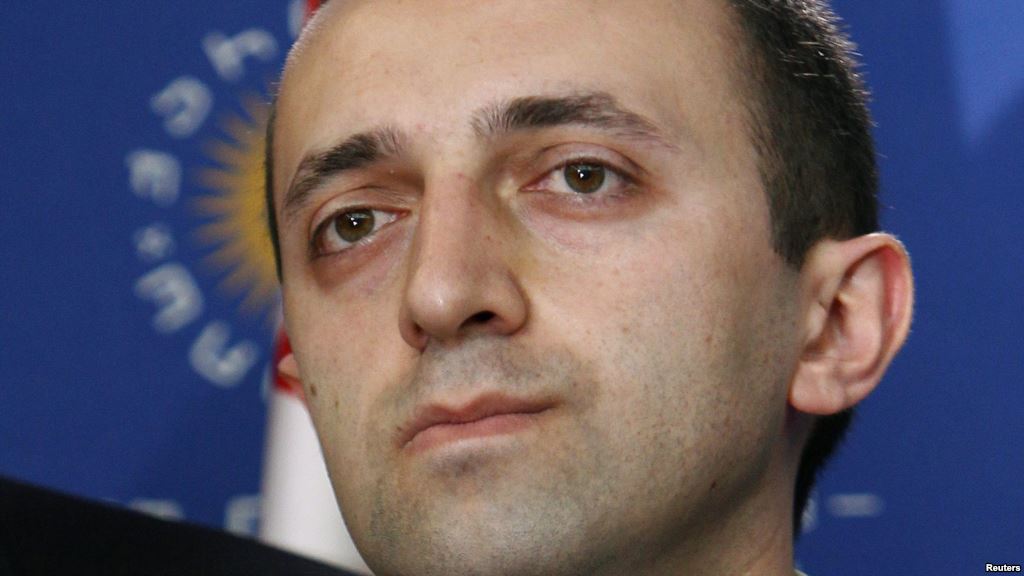
Georgian Prime Minister Reshuffles the Cabinet to Divert the Blame
Publication: Eurasia Daily Monitor Volume: 11 Issue: 139
By:

On July 21, Georgian Prime Minister Irakli Garibashvili announced the first major cabinet reshuffle since the Georgian Dream (GD) coalition came to power in October 2012. The shake-up affected seven ministers: two were moved from one cabinet post to another, while the other five lost their positions. Overall, seven agencies: the Ministry of Agriculture, Ministry of Infrastructure and Regional Development, Ministry of Environmental Protection, Ministry of Culture, Ministry for the Prison System, Ministry for Internally Displaced Persons and Accommodation, and the State Ministry for the Diaspora received new chiefs. On July 26, the GD-dominated parliament approved the new Cabinet (Channel 1 TV; Rustavi 2; July 21, 26).
Prime Minister Garibashvili justified the government reorganization by noting his dissatisfaction with the work of the sacked ministers. As he stated, the replaced ministers did not have a strategic vision to develop their agencies and lacked independent initiative, always waiting for the prime minister to issue instructions to them on every minor issue. He said the Cabinet and the country needed brave risk-takers and quick decision-makers as ministers. Overall, Garibashvili concluded, the reshuffle served to increase the government’s effectiveness (Imedi TV, July 23).
At first glance, Garibashvili’s explanation appears plausible. The government reshuffle, however, raises the question as to why Garibashvili did not also replace other ministers who have widely been considered equally ineffective—such as the ministers of education, economy or finances—particularly amid the country’s shaky socio-economic situation (osgf.ge, October 2013; World Bank, March 6; Georgia Today, July 3)? It appears that Prime Minister Garibashvili simply picked low-profile cabinet figures and ousted them from ministries of secondary significance, thus turning them into easy scapegoats for the country’s (and thus the government’s) mounting problems. He did not, on the other hand disturb the government members close to him politically, such as the ministers of state integration, economy, finances or education, despite their dubious performance after GD’s almost two years in power. The Cabinet reshuffle, therefore, should be viewed as more of a public relations stunt—particularly against the background of Georgia’s weak economic growth and continued concern over jobs (Civil Georgia, May 5), and absence of progress on reintegrating the Russian-occupied Georgian regions of Abkhazia and South Ossetia. Rather, it appears the prime minister threw out several ministers to appease a deeply disappointed and increasingly apathetic public and put all the blame for his government’s failures on those ousted ministers.
The recent cabinet reshuffle also may have had another goal for Garibashvili. Specifically, as the local elections are over and the next parliamentary elections are still 15 months away, the prime minister feels that he now has greater leverage to consolidate his own power—or at least create the impression that he is able to do so. By pushing out several ministers and asserting the role of a strong and concerned executive, Garibashvili tried to send the message that he is now fully in charge. However, only few in Georgia may trust that he is actually calling the shots. Indeed, in a May 2014 public opinion poll commissioned by the National Democratic Institute (NDI), 62 percent of Georgians expressed their belief that former prime minister and Georgian billionaire Bidzina Ivanishvili continues to rule Georgia from behind the scenes (Civil Georgia, May 5).
As economic hardships persist and public disappointment grows, Garibashvili may find that changing cabinet ministers will not be sufficient for him to contain rising popular discontent. He will need effective policies to address the country’s multiple problems. So far, he has not provided real cures for any of them.
Another problem is that Garibashvili continues to make mistaken conclusions based on recent political developments. Specifically, on the day when he announced the reshuffling of the cabinet, Garibashvili triumphantly declared that the June–July 2014 local elections illustrated full voter support and confidence in the government (Civil Georgia, July 21). In reality, the local elections actually demonstrated a rapid loss of popular support for the ruling GD coalition. Georgia Dream barely won a slim majority across the country, and was forced into runoffs in 13 governorship and eight mayoral races, including in the capital, Tbilisi (see EDM, June 25).
Overall, the situation for the GD-led Georgian government does not look promising. Nor does it look optimistic for the entire country. Prime Minister Garibashvili’s recent major reshuffle of the Cabinet indicates looming troubles ahead. This reshuffle also suggests that the government does not have any effective policy proposals to alleviate the country’s problems. Instead the prime minister is trying to divert blame from the government to individual ministers and portray himself as an able executive who can make strong decisions. It is yet to be seen, however, for how long such tactics will work.




